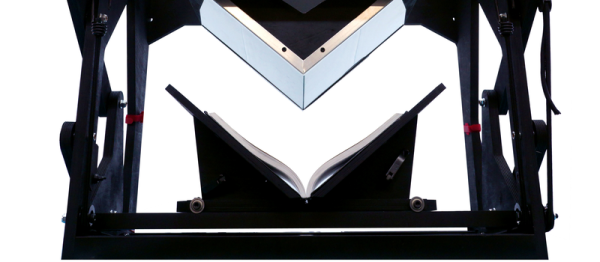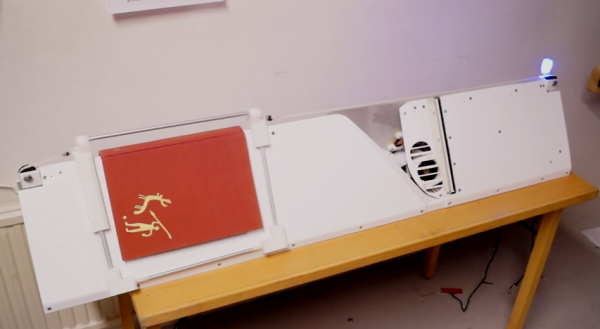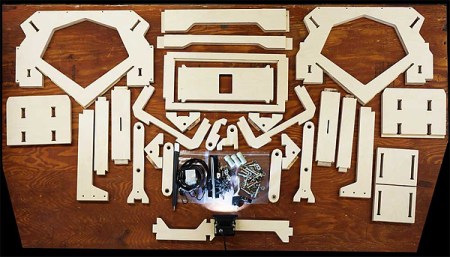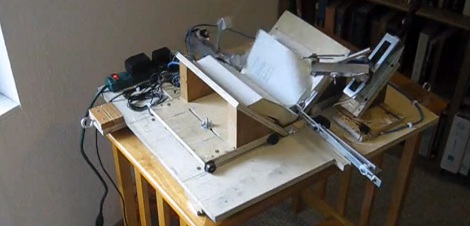How do artificial intelligences get so intelligent? The same way we do, they get a library card and head on over to read up on their favorite topics. Or at least that’s the joke that [Jakob Werner] is playing with in his automaton art piece, “A Machine Learning” (Google translated here).
Simulating a reading machine, a pair of eyeballs on stalks scan left-right and slowly work their way down the page as another arm swings around and flips to the next one. It’s all done with hand-crafted wooden gears, in contrast to the high-tech subject matter. It’s an art piece, and you can tell that [Jakob] has paid attention to how it looks. (The all-wooden rollers are sweet.) But it’s also a “useless machine” with a punch-line.
Is it a Turing test? How can we tell that the machine isn’t reading? What about “real” AIs? Are they learning or do they just seem to be? OK, Google’s DeepMind is made of silicon and electricity instead of wood, but does that actually change anything? It’s art, so you get license to think crazy thoughts like this.
We’ve covered a few, less conceptual, useless machines here. Here is one of our favorite. Don’t hesitate to peruse them all.



















